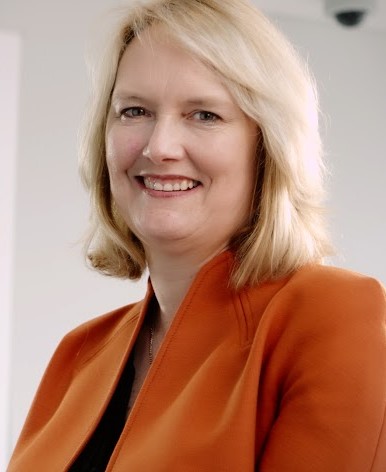Institution-led imposter syndrome is a major reason for the lack of women in medical leadership, according to one expert, and new approaches are needed to place the burden of change on institutions.
Despite the growing number of women working in medicine, they are not necessarily making it into health leadership positions, according to a senior clinician interviewed by InSight+.
“We’re in the paradigm that was generated by older generations, that doesn’t apply today,” noted Professor Helena Teede OAM, an endocrinologist and director of Monash University Centre for Health Research and Implementation. “What we know is that the concept of ‘merit’ doesn’t take into account relativity to opportunity, is used to perpetuate bias and privilege.”
Professor Teede’s work is focused on creating equity in health institutions based on research, and establishing the Monash Centre for Health Research and Implementation.
“We’ve got more women than men in health care, and increasingly we have more women than men in education and higher degree research. But they’re not leadership roles,” Professor Teede said.
“We’re talking about any marginalised group — including gender and race. We’ve been thinking that individual women don’t want careers and aren’t putting themselves forward or nominating themselves for awards — as if it’s a personal behavioural trait. And that is clearly a flawed premise.”

The problems are institutional as well as social, according to Professor Teede.
To advance the cause, she has established the national Advancing Women in Healthcare Leadership Initiative, which focuses on increasing the number of women in health care leadership.
“The primary purpose of the centre is to deliver solutions to real world and real health system and real community problems through research,” she said.
Imposter syndrome is a systemic issue
Professor Teede said that most of the work being done is focused on creating equity through re-thinking imposter syndrome.
“So, I’ve been running a women’s leadership program now for about 10 years and one of the things that I hear every single time from the women in the room is that they feel they have impostor syndrome,” Professor Teede said.
Some of the work of the Centre is focused on creating equity through re-thinking ‘imposter syndrome’ and understanding what the drivers and implications are in terms of women careers, according to PhD candidate Daisy Morris, a colleague of Professor Teede.
“We have thought that it’s the fault of the individual, and you need to fix the individual. But it’s got nothing to do with personality. If you have a different skin colour, if you look different to the current power dynamics, you will be disadvantaged, and you’ll feel like an impostor,” she said.
Research shows that women approach leadership differently, according to Professor Teede.
“There are randomised control trials showing that if you randomly allocate women versus men into policy roles, that you have more equitable policies and better health outcomes where women are in those places. They work more collectively with their community and have better health outcomes for those who are most disadvantaged,” Professor Teede said.
Breaking down the paradigms
Professor Teede said that these new ways of thinking are being seen to have an effect in society.
“We are breaking down those paradigms and moving to a more collective community workplace approach,” she said.
“The policy changes we’re seeing in a federal government level are really quite impactful and inspirational. You can see some great things like the Women’s Gender Equity agency, and the Victorian Commission for Gender Equity. When organisations have to report on the gender equity and on their pay gap, all of a sudden, it’s the CEO’s problem.”
Economic opportunity
Professor Teede said that things have changed in Australia since the most recent federal election.
“Australian women went from being the highest educated in the world — which we still are — but fell to 70th for relative economic opportunity. We’ve gone back up to 40th in two years, because of some of the policy changes we’ve seen,” Professor Teede said.
“I want to emphasise this is not a battle of men versus women. This is a significant cultural shift that a lot of people are uncomfortable on and have to go on the journey. This is not the fault of the individuals who have the most influence at the moment — they are lucky. But we need to call it for what it is and balance it out.”
Study shows women physicians outperforming male colleagues
The University of Tokyo recently published research that showed that female patients treated by female physicians had a lower mortality and lower re-admissions than male patients treated by male physicians.
The study reported that, “for female patients, the difference between female and male physicians was large and clinically meaningful (adjusted mortality rates, 8.15% vs. 8.38%).”
Professor Teede said this study is just one in a growing body of evidence showing women in medicine doing as well as, if not better than, men in medicine.
“The fact that we have this research, and many other examples that show that female doctors have spent more time with their patients have better outcomes – whether it’s surgical, prevention, etc – and are paid less, because they spend more time with their patients – it’s an indication that look, we’re good enough. Actually, we’re very good, we always were good, we may even be better,” said Professor Teede.
“We no longer need to prove this anymore. Rather we all need to get on with creating an equitable system and workplace where we can all thrive and deliver the best care and outcomes for our community.”
Professor Teede said that seeing women in leadership will continue to improve the gap.
“The more women we have in those positions, the more people see what they may want their careers to look like,” she concluded.
Subscribe to the free InSight+ weekly newsletter here. It is available to all readers, not just registered medical practitioners.

 more_vert
more_vert
This piece complains about imposter syndrome affecting women, and makes the point that women are more careful than men clinicians and thereby have better outcomes. It ignores the fact that it might be imposter syndrome that makes women more careful and better than men.
Disappointing to see some commenters failing to see the point of the article. When someone with insight into the area points out something you had not been aware of, there may be something to learn.
The essence of the “better outcomes” vs “more imposter syndrome” discussion relates to socialisation. There is something about the way many (not all) women are socialised that appears to make their clinical outcomes good (or conversely, something about how many (not all) men are socialised that appears to make outcomes less good), and something about socialisation that makes many women less confident about their roles.
Ideally, we would abandon the male/female stereotypes and refer to individual characteristics. So, it might be something like:
– Women are socialised to pick up subtle cues (as are some men) – less teach everyone these skills; or
– Men are socialised to believe in their own leadersbip abilities (as are some women) – let’s teach everyone leadership skills.
It’s interesting to me that Imposter Syndrome has been morphed into something imposed on women by an external lack of respect or credit. My understanding was it referred to individuals who were highly respected and regarded as authorities but secretly felt they were inadequate.
Although the fact that it’s not a battle of men vs women is emphasised, as a senior male it really feels like it is when the article goes on to say “Actually, we’re very good, we always were good, we may even be better”. That might be true, but to cite research showing females treating females achieve better outcomes than males treating males as proof of this is spurious – the difference could be entirely to do with the patient groups.
It also seems disrespectful to absolve the individuals who have the most influence at the moment (read men) by saying they are lucky. For most I’m sure it’s not just gender and good fortune that got them there.
I would like to see more women in leadership roles, but those whose ideology would have them agitate so strongly for it should be careful what they wish for – they might find the extra burden of responsibility and erosion of time impacts on the qualities that made them good in the first place.
Strange to read the comment that “I want to emphasise this is not a battle of men versus women.”
And then the very next paragraph is begins with this “The University of Tokyo recently published research that showed that female patients treated by female physicians had a lower mortality and lower re-admissions than male patients treated by male physicians” lauded by the same person who made the former comment.
(and by the way, the paper involves patients in California USA, although the lead authors is currently working in Japan)
Regrettably linking the leadership position as relating to gender pay gap is not what people assume to be. Leadership role involves more meeting and time beyond usual duty hours, which is not adequately renumerated in the UK-Australian healthcare system. In the NHS, there is “awards” and loading but these are not payment for doing the work in the same working hours as everyone. It is like executive postion, sure more pay but ultimately this meant being pretty much being available at all times (ie on call unofficially even if you have someone else on call).
There is a reason why many clinicians doesnt want to do leadership/executive work, It just so happen those who chose to do so are from a particular gender
When I last looked, women doctors were paid the same as men for the same work, same hours, same responsibilities
It is on tenuous ground to to create separate categories of remuneration for the work choices women might make. There is also some selective reporting of research here. Where is the evidence in Australia that patients have better outcomes when treated by women doctors compared to male doctors? I am a bit sick of reading articles like this selected by a predominantly female panel of editors. Talking about gender imbalances, you could put your own house in order.
Thanks Prof Teede. Great contribution to a critical area for gender and societal equity, health outcomes and resource/workforce maximisation and sustainability – balanced, evidence based and forward thinking.
Exactly, we have stop gender bias and get more men in teaching and medicine. What a gender biased article.
More power to your arm, Helena; right on